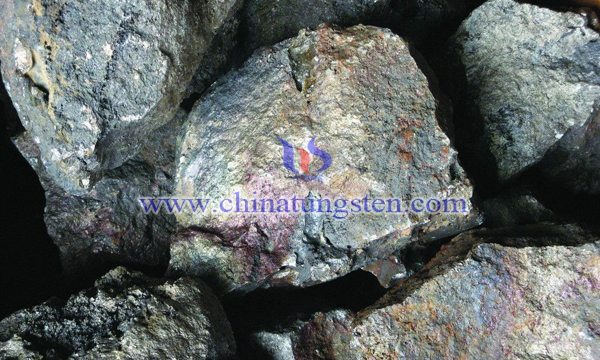Floatation of Complex Tungsten Ores
- Details
- Category: Tungsten Information
- Published on Sunday, 13 May 2018 21:27
Complex tungsten ores usually refer to ores containing pyrite, antimony, titanium oxide particles, quartz, calcite, sericite, argillaceous material, and cryptic carbon. The separation of crystalline carbon, calcite and Scheelite from complex tungsten ores has always been recognized as one of the difficult problems in ore dressing, and it is also the main reason for this kind of tungsten ore to be difficult to use.

The equivalent reduction ratio of gangue minerals in scheelite and ores is 2.08-2.78, which is an easier ore to re-elect. However, due to the finer grain size of scheelite inlays, the basic monomer must be disintegrated until it is ground to 0.2 mm. Almost no beneficiation is used for beneficiation. The most typical process for scheelite flotation is the use of sodium carbonate or sodium hydroxide and sodium silicate as regulators and fatty acids as collectors to float scheelite. Methods include sodium silicate-sodium oleate method, sodium silicate-metal salt-sodium oleate method, sodium carbonate-sodium silicate-sodium oleate method, water glass-sodium hydroxide-sodium oleate, and lime method.
With the progress of the times, the flotation of scheelite has entered a new era of new chemicals and new technologies. The focus of the study has been transferred from the original sorting index to the cost and environmental protection. Therefore, the search and development of a low pollution, low cost and efficient tungsten mine recovery process and flotation reagents have become the mineral beneficiation of tungsten mines at home and abroad. It is of great significance for workers to make breakthroughs in their work direction.
Researchers have developed a beneficiation agent for the separation of wolfram from complex tungsten ores, including the use of oxidized paraffin soap, kerosene, butyl xanthate and butadiene black as collectors, sodium carbonate as a regulator, the use of pine oil as a foaming agent, and an alternative group of sodium silicate and ferrous sulfate or aluminum sulfate. It is combined with a inhibitor.
Add 470 to 1350 g of paraffin wax soap 8 per ton of raw ore, add 30 to 150 grams of kerosene, add 150 to 550 grams of butyl xanthate, add 30 to 150 grams of butyl ammonium black, add 2000 to 4500 grams of sodium carbonate 5, add 10 to 60 grams of pine oil, add 3050 to 7000 grams of sodium silicate, add 400 to 1300 grams of ferrous sulfate 7 or add 65 to 160 grams of aluminum sulfate.
Compared with the traditional method, the WO3 grade of the wolfram concentrate by the new flotation reagent and the method is 70.86%, and the recovery rate of WO3 is 66.82%. Compared with the WO3 grade of the tungsten concentrate with fatty acid collector and the recovery rate of WO3 , the recovery rate of WO3 has been significantly improved, and the cost is reduced.
- Tungsten Manufacturer & Supplier, Chinatungsten Online: www.chinatungsten.com
- Tungsten News & Prices of China Tungsten Industry Association: www.ctia.com.cn
- Molybdenum News & Price: news.molybdenum.com.cn
- Tel.: 86 592 5129696; Fax: 86 592 5129797; Email: sales@chinatungsten.com



 sales@chinatungsten.com
sales@chinatungsten.com